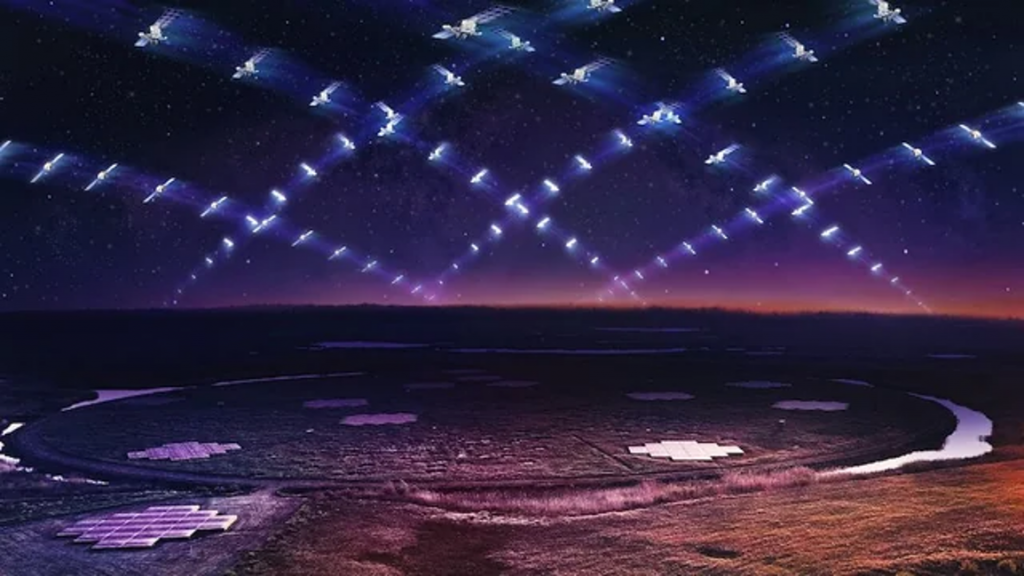As the stars fade into a hazy backdrop, Australia’s once-untouched dark skies are witnessing a rapid transformation. A mesmerizing dance of thousands of satellites now illuminates the night, their purpose being to enhance global communication. However, this celestial symphony is not without discord. Scientists gazing into the depths of space have sounded the alarm, warning that these satellites are encroaching upon their ability to study the cosmos.
A groundbreaking study utilizing a powerful telescope in the Netherlands has unraveled that the telecommunication Starlink constellation, an ambitious project by Elon Musk’s SpaceX, has emerged as an unexpected obstacle to scientific exploration. Published in the Astronomy & Astrophysics journal, the study observed 68 of SpaceX’s satellites and detected emissions drifting beyond their designated frequency bands in space. These findings mark the first concrete evidence of interference from Starlink satellites and raise significant concerns in the face of a burgeoning satellite population.
The sheer magnitude of satellites traversing the cosmos amplifies the apprehension expressed by scientists. Federico Di Vruno, co-director of the International Astronomical Union Centre for the Protection of the Dark and Quiet Sky and a study author, emphasizes the risks posed by the growing numbers.
As Dr. Di Vruno explains, “If all the satellites are similar, suppose that there is a satellite in space that radiates this kind of signal, there is a very, very small chance that this satellite will be in the beam, in the main site, of your telescope. But if the numbers start to increase, the likelihood of that happening if all the satellites are similar increases.”
Looking ahead, the future of space is set to be densely populated, further intensifying concerns about inadequate regulation. International law expert Steven Freeland highlights the inevitable crowding of space, particularly in low-Earth orbit where these satellites will be concentrated. With projected launches of 100,000 to 500,000 additional objects in the next decade, the lack of comprehensive and up-to-date regulations has rendered the satellite landscape akin to the untamed Wild West.
Astrophysicists and researchers echo these concerns, as increased satellite activity disrupts their work and interferes with the delicate balance of observing the universe. From the perspective of Robin Cook, an astrophysicist who captures images of deep space, the satellites appear as pesky midges obscuring the grandeur beyond.
Dr. Di Vruno shares these concerns in his role as the spectrum manager for the Square Kilometre Array Observatory, a collaboration dedicated to advancing radio astronomy. As he foresees, more prominent satellite constellations from various nations and the already vast Starlink fleet will exacerbate the interference issues astronomers face.
This groundbreaking study utilized a highly sensitive telescope to scrutinize the emissions of passing satellites, shedding light on an issue not adequately addressed by existing space regulations. Dr. Di Vruno points out the regulatory gap surrounding unintended radiation from satellites, contrasting it with the stringent tests and certifications required for electrical equipment on Earth to ensure minimal interference. Satellite designers and providers have yet to address this critical aspect comprehensively.
Recognizing the urgency, the Square Kilometre Array Observatory (SKAO) has initiated discussions with Starlink to mitigate the interference caused by its satellites. Collaborative efforts aim to find suitable solutions that balance satellite technology’s needs with scientific research’s integrity, ensuring a harmonious coexistence between our earthly endeavors and the vast mysteries of the cosmos.

